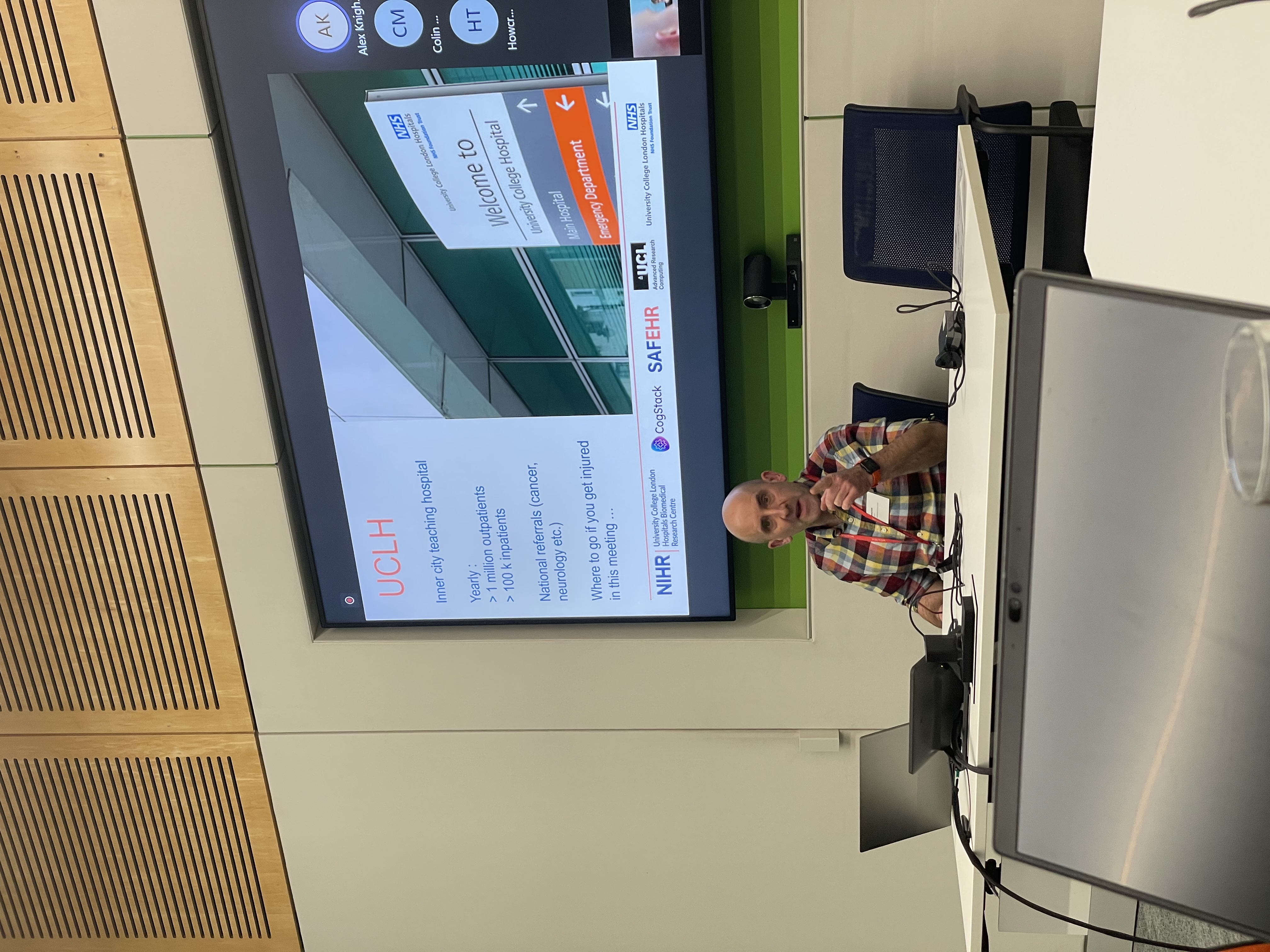Meeting report from HDRUK funded HEalth Data RWE OMOP Network (HERON) studyathon
In mid March a few members of the Safehr team spent a week participating in a ‘studyathon’ funded through the Health Data Research UK (HDRUK) Real World Evidence pilot study that has brought £50k of funding into UCLH. The project is helping us improve the quality of UCLH data extracts so they can be analysed with external tools and provide aggregated results for network studies with other UK data partners.
There are 6 other data partners on the project (Barts, GOSH, Lancashire, Leeds, Edinburgh and CPRD) and the coordinators based at Oxford university. The project is running federated analyses. That’s to say the same analysis code is run by data partners on their own data using their own infrastructure, then aggregated results are shared and compared. Federated analyses are a key advantage of a Common Data Model (CDM). OHDSI (the organisation behind the OMOP CDM) has been running such federated analyses for years, producing hundreds of papers. Our involvement in this project is a result of the investment UCLH has made in providing research data in the OMOP CDM and the hard work of the SafEHR team.
Within the project we are contributing to 3 studies.
- data characterisation summarising partner data and establishes how suitability for subsequent studies.
- describing the use of common antibiotics potentially associated with antimicrobial resistance as listed for close surveillance by the World Health Organisation.
- describing the use of high-cost medicines in different 2ry care providers.
The week was very well run by the Oxford coordinators who have experience of running such studyathons with both UK and European partners. The team have a crucial role in the EU Darwin project managing the collaborative development of software tools and using these tools to run studies. Oxford shared analysis code with partners beforehand for us to run on our own data. During the studyathon they ran learning sessions each morning going through the components of the analysis code, the aim being to develop capacity within data partners to run their own studies.
There were also strategic sessions, talking about the role of the network and opportunities for further funding. The coordinators have developed a business case and branding to name the group the HEalth Data RWE OMOP Network (HERON). HDRUK are likely to fund for one more year. During that year the most important objective will be to secure longer term funding to make the network sustainable. There was agreement from project partners and others (NICE & MHRA) that the network is a good thing and there is value in continuing. One of the objectives of the week was to initiate research abstracts to start providing evidence of value to support these funding applications. This was successful and HERON together have submitted 5 abstracts for the OHDSI EU conference in June.
It was good to meet data people doing similar things. This networking also had tangible benefits to UCLH. Beforehand we identified a problem with dated OMOP vocabularies that meant we were missing 10 million drug rows. Another data partner who were unaware of this problem found that they were missing 4.5 billion rows of primary care drug data. Together we came up with a short term fix and started discussions about longer term solutions. Learning about research tools was also useful for us as data providers given we often get questions from researchers about how to use OMOP data. Now we are starting to be in a better position to be able to advise researchers on the tools that work directly on the Common Data Model, which after all, is a key benefit of using OMOP.
If you have any questions about the HDRUK project please contact Andy ([email protected]).
